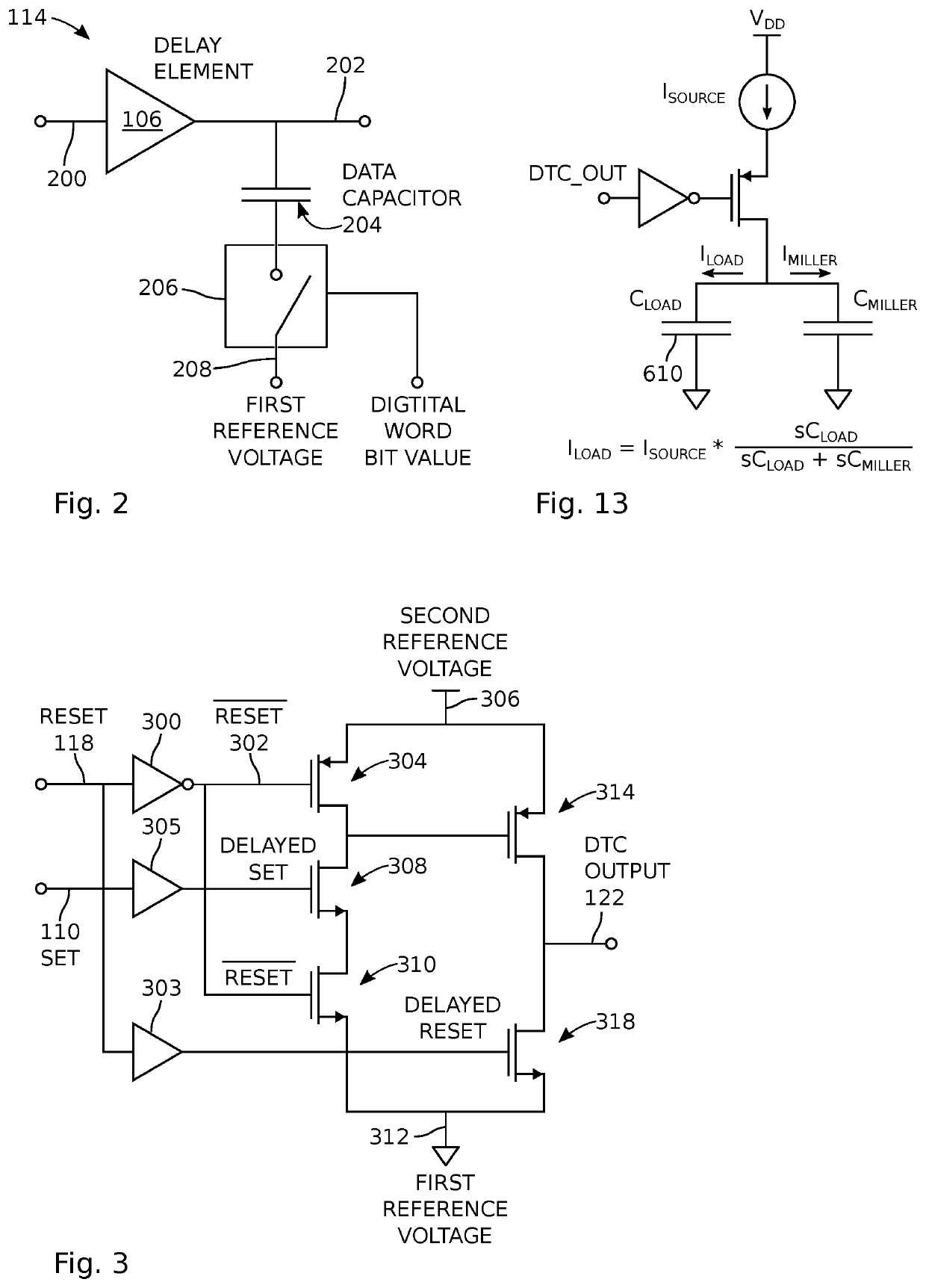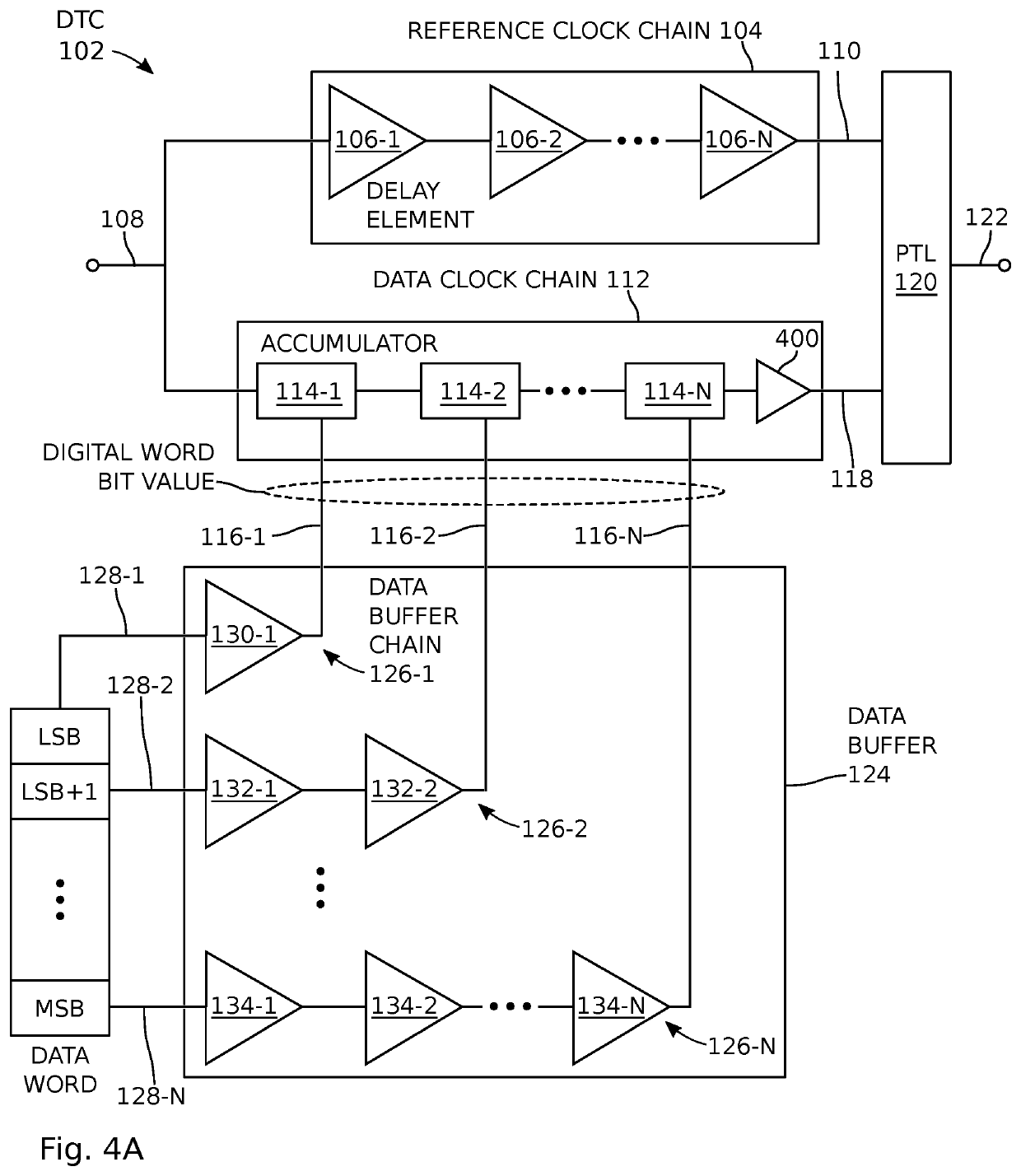Phase accumulation digital-to-analog converter (DAC)
a digital-to-analog converter and phase accumulation technology, applied in the field of digital-to-analog conversion circuitry, can solve the problems of occupying a large portion of the overall area, increasing power consumption and area of the dacs, and large analog components, etc., and achieves small area, small configuration, and high resolution.
- Summary
- Abstract
- Description
- Claims
- Application Information
AI Technical Summary
Benefits of technology
Problems solved by technology
Method used
Image
Examples
Embodiment Construction
[0035]FIG. 1 is a schematic block diagram of digital-to-time converter for a phase accumulation digital-to-analog converter (DAC). The DAC comprises a digital-to-time converter (DTC) 102, which comprises a reference clock chain 104. The reference clock chain 104, in turn, comprises N number of series connected delay elements 106-1 through 106-N, where N is an integer greater than or equal to 1. In one aspect the delay elements are buffers, a circuit that is well known in the art. However, the delay elements of the reference clock chain, the data clock chain, and data buffer (described below) are not limited to any particular delay mechanism, and may be enabled using active, passive, or a combination of active and passive components. The reference clock chain 104 has an input on line 108 to accept a clock signal (CLK) with a leading clock edge and an output on line 110 to supply a set signal representing a first delay of the leading clock edge. As shown in FIG. 5, the first delay dur...
PUM
 Login to View More
Login to View More Abstract
Description
Claims
Application Information
 Login to View More
Login to View More - R&D
- Intellectual Property
- Life Sciences
- Materials
- Tech Scout
- Unparalleled Data Quality
- Higher Quality Content
- 60% Fewer Hallucinations
Browse by: Latest US Patents, China's latest patents, Technical Efficacy Thesaurus, Application Domain, Technology Topic, Popular Technical Reports.
© 2025 PatSnap. All rights reserved.Legal|Privacy policy|Modern Slavery Act Transparency Statement|Sitemap|About US| Contact US: help@patsnap.com



